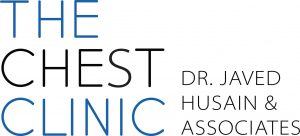Since its establishment in 2012 as a campaign by the Forum of International Respiratory Societies, August 1 has been marked as World Lung Cancer Day. Members of the international lung health community, notably the American College of Chest Physicians (CHEST) in the United States, utilise the day to raise awareness of the disease’s risk factors and to encourage people to get tested for lung cancer.
The World Health Organisation reports that lung cancer is the most prevalent cancer in the world, accounting for 2.09 million annual new diagnoses and 1.76 million cancer-related deaths. The main risk factor for lung cancer is smoking, however it’s not the only one: The probability of acquiring the disease is further increased by exposure to particular carcinogens and a family history of the condition.
Key points on Lung cancer
- Uncontrolled cell growth is the cause of cancer. Lung cancer develops in different parts of the lungs. Cancer from Lungs can spread to different parts of the body, this is called as metastasis. Lung cancer is tough to treat and sometimes identified too late.
- Non-small-cell lung cancer (NSCLC), small-cell lung cancer (SCLC), and lung carcinoid tumour are the three main kinds of lung cancer. NSCLC, which can be further divided into adenocarcinomas, squamous cell carcinomas, and big cell (undifferentiated) carcinomas, accounts for about 80 to 85 percent of lung cancer cases.
- Risk factors : Lung cancer risk is increased by a number of variables, including:
- Cigarette smoking is the leading cause of lung cancer. As much as smoking conventional cigarettes, the risk of lung cancer is increased by smoking cigars, pipes, low-tar cigarettes, and menthol cigarettes. Lung cancer can also be brought on by inhaling second-hand smoke.
- Positive family history or personal history of lung cancer: Lung cancer survivors are at risk of developing another lung cancer, especially if they smoke. A person’s risk of lung cancer is also higher if a relative had the disease.
- Exposure to carcinogenic (cancer causing toxins/chemicals) exposure to radon gas, which naturally develops from the decomposition of radioactive elements in rocks and soil and can become trapped in homes and buildings. Other substances like Asbestos, arsenic, diesel exhaust, and other cancer-causing compounds prevalent in workplaces raise the risk of lung cancer.
- Chest radiation therapy: People who have undergone radiation therapy for other types of cancer are more likely to get lung cancer.
- Symptoms: The symptoms may overlap with other respiratory illness, these are cough, maybe dry or with discoloured phlegm. Sometime patient cough up blood with sputum, which is an alarming sign, shortness of breath, chest pain, wheezing, weight loss, loss of appetite and hoarseness of voice.
- Diagnosis and Treatment: timely identification is the key factor in treatment of Lung cancer. If you or anyone around is suffering from any of symptoms above, immediately seek medical help.
The initial test carried out on a patient with lung cancer symptoms is frequently a chest X-ray. Lung tumours are more noticeable on detailed cross-sectional images created by CT scans, which employ X-rays. A biopsy may be performed to ascertain the malignancy of a tumour or nodule if one is discovered. Cytology(analysis of cancer or abnormal cells) on sputum or BAL (Broncho alveolar lavage) sample is processed to see abnormal cells. If a patient develops pleural effusion (collection of fluids around the lungs due to complication of lung cancer), it can be aspirated and the fluid is send for cytology.
